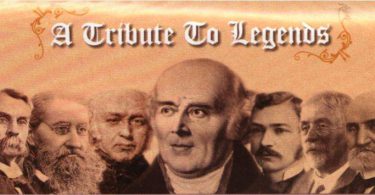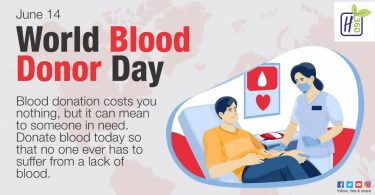
Dr. E.E. Case was a famous Homoeopathic clinician of USA and was known to be a person of studious and retiring disposition. He was equally admired and respected by his patients as well as his colleagues. He was known to be a serious and respectful individual. He based most of his practice in his office in the Sage- Allen Building which had beautiful landscape of rivers and distant hills. He was always surrounded here by his books, his files of records, his medicine cabinets and his pictures. He was known to influence many young Homoeopaths to follow classical methods of Hahnemann.
Personal Life
Dr. Case was born on 28th May, 1847 in Canton, Connecticut. His parents were Norton and Eliza Case, very little is known about their background.
He was married to Sarah Maria Griswold on 14th October,1874. She died very young at the age of 36 years on 14th October, 1883. They had four children out of this marriage namely Herbert Monroe Case, Helen Eliza Case, Clarence Norton Case and Duane Herschel Case.
On 24th February, 1886, Dr. Case had his second marriage to Ruth Emorette Holcomb and had two children with her viz. Everette Erastus Case and Jennie M. Case.
He served for many years as a Deacon and member of Fourth Congregational Church, in Hartford. Later he was also a member of Windsor Congregational Church.
Education
He completed his schooling from public schools of his native town and Williston Seminary from which he graduated in 1868. He graduated from the Yale college as a BA graduate in the year 1872 when he was 25 years old. Later he attended the New York Homoeopathic Medical College and completed his M. D. in the year 1874.
Practise and Profession:
He started his practice in Hartford, Connecticut immediately after graduating till his death. His practices spanned over 40 years which is an achievement.
He was the President of Connecticut Homoeopathic Medical Society during 1889-1890.
He was appointed as the President of the International Hahnemannian Association in the year 1901-1902, after he served the position of Secretary in the same association.
Dr. Case also used to share his clinical experiences in the form of Case series from time to time, which were concise, well-constructed and systematically worked out. He was known to be an acute observer, an able diagnostician, and an accurate prescriber. He had many remarkable cures in cases which were considered incurable.
The International Hahnemannian Association requested him, in 1915, to collect and publish all his previous articles. Dr. Case in spite of his busy practice took out time and put together his work viz. Some Clinical experiences of Dr. E.E. Case in 1916
He was also a member of the American Institute of Homoeopathy.
He was also a teacher along with Dr. W.A. Dewey to Bertrand de Nevreze, who later along with others founded the French Homoeopathic Odontology.
His major work: Some Clinical experiences of Dr. E. E. Case, 1916
The book is a guide for novices and busy practitioners alike as Dr. Case has listed his experience in the most elaborate yet simple way which is easy to understand. The beginning chapter which deals with the topic- ‘How Shall we select and administer the Homoeopathic remedy?’ has given multiple rules to deal with any clinical situation we may face in our clinics. The helpful part about these rules is that Dr. Case has mentioned his own cases as an experience to demonstrate the applicability of some of these rules.
The rules mentioned for are as follows:
Choice of Remedy
- Other things being equal, give the preference to a Mental symptom rather than to bodily one.
- If there is no peculiar mental symptom, use the most peculiar bodily one.
- A common symptom, by concomitance, may become characteristic.
- In subsequent prescriptions, when the same remedy is not indicated, follow the latest symptoms which have appeared.
Potency selection
- Give the higher potencies to those accustomed to the low or to allopathic treatment.
- To those accustomed to high potencies, give still higher, or much lower; that is, change the potency for the patient.
- After improvement stops, change the potency if the same remedy is indicated.
Repetition of the Dose
- In cases with a well-marked exacerbation give a dose at the time of, or immediately after an attack.
- Repeat the dose until an effect is produced, then stop.
- Never repeat a remedy so long as improvement continues, even if it is slow.
In discussion with Dr. Boger as mentioned in his article ‘Is there a Law of Dose?’, Dr. Case is quoted saying ‘As the switch acts upon the railroad train, so does the remedy put the vital force upon the right track. Then so long as it continues moving in the right direction a repetition of the remedy, or a change of remedy, does harm’
Hobbies: Genealogy, gardening, and music
It was a very well-known fact that Dr. Case was very thorough in his works and his profession. He was often subjected to his hobby of Genealogy as a method to take his time off his professional space. It was said he occupied nearly 20 years of his leisure time in compiling a Genealogy of the Case family. He had written about 18,000 letters during the period he devoted to the compilation of his ancestry. The dedication to this work was so much as he had a desk designated in his office only for this work of Genealogy.
He was also quite interested in gardening activities. He often retreated to his country home which he enjoyed thoroughly by means of cultivation of his garden, taking care of bees and culturing fruits especially grapes.
He also enjoyed playing the violin. However, in his later years he could not pursue this hobby.
Death
In 1916 he had an automobile accident which had left him with reduced vitality and had caused injury to his heart. This had already left him defenceless and hence suffered when he was affected with illness in the last days of his life.
He passed away on 27th of October in 1918 due to Influenza and Pneumonia. He was 71-year-old when he passed away.
Dr. Stuart Close wrote his Obituary in the Homoeopathic Recorder published in 1918. He mentioned him to be an ‘old puritan spirit’ with respect to the principles and practise of Homoeopathy. And that ‘..No man ever applied those principles more conscientiously nor more successfully than did Dr. Case.’
Authors
Prof. (Dr.) Subhas Singh1, Dr. Rumsha Tamkeen2, Dr. Vaishnavi Achrekar2, Dr. Vignesh K2, Dr. Binay Pratap Singh2,
- Director, National Institute of Homoeopathy, Kolkata
- PGT, National Institute of Homoeopathy, Kolkata





